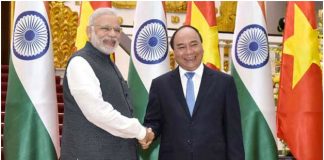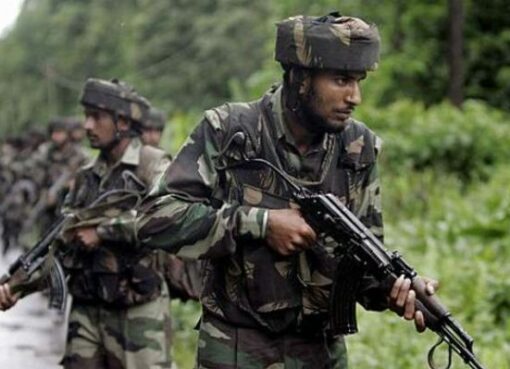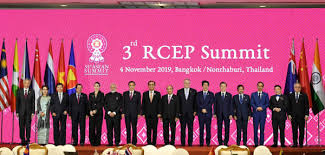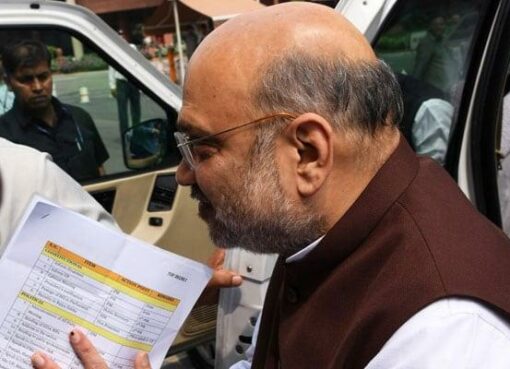Prime Minister Narendra Modi’s recent visit to Vietnam, enroute to China to attend the G-20 summit, carried a message to other yet skeptical ASEAN member -countries that India is serious about its “Act East” policy and is ready for a larger, multi-purpose and meaningful engagement with the region.
The two countries have decided to elevate their strategic relations to `Comprehensive Strategic Partnership’ (CSP) to provide “a new direction, momentum and substance to our bilateral cooperation”, as Mr. Modi said after his talks with his counterpart Nguyen Xuan Phuc in Hanoi. Only two other countries have such partnership with Vietnam, namely China and Russia.
The elevated partnership with Vietnam not only demonstrates India’s readiness to make good its promise to intensify bilateral relations including defense cooperation, but also provides the necessary anchorage to show-case its commitment to play a larger role of `regional balancer’. For Hanoi, it is a crucial element of its foreign policy, “diversification – a wide network of partnerships as the only way to hedge against over dependence on any one state”, as noted by Russia’s Southeast Asia expert Anton Tsvetov.1
Defense and Security cooperation is one of the important pillars of the CSP and India pledged to effectively carry out the `joint vision statement’ to deepen defense cooperation for the period 2015-20, which was signed during the visit of the Vietnam’s then Minister of National Defense Gen. Phung Quang Thanh on 25 May 2015. The US $ 500 million Line of Credit to Vietnam for defense cooperation and 12 other agreements encompassing a range of crucial areas, such as defence, space, cyber security, IT, sharing white shipping information between the two navies, signed during Mr. Modi’s visit, form the crux of the expanding partnership.
Some of the proposed military contracts include “assisting Vietnam in weaponising … its Petya class frigates for an anti-submarine role” and supplying “at least 10 new patrol boats to be built by L&T”, according to a report in Economic Times. 2
“Since 2008 India has supplied Vietnam with some 5,000 spare parts for its Soviet Petya-class frigates and provided assistance in overhauling MiG-21 fighters and T-55 tanks. In October 2014 India pledged to supply Vietnam with four locally built offshore patrol vessels under a US $ 100 million credit line,” noted the Jane’s defense weekly3. India has also been providing training program for Vietnamese crews who would be serving on the Russia-build Kilo-class submarines.
Supply of BrahMos anti-ship cruise missile, jointly developed by India and Russia, was also under consideration but this may have run into complications in the light of strong objections from China and consequent Russian reservations.
Trade and Commercial relations, including oil and gas exploration, form another significant element of CSP with both countries pledging preferential treatment to each other in their economic cooperation, including investments.
The two-way trade between India and Vietnam surpassed US $ 7.8 billion in 2015 and both Modi and Nguyen Xuan Phuc have expressed strong desire to double it bythe year 2020.
While Vietnam is thus “central to India’s Act East policy’, Delhi is only one of the elements, though a significant one, of Hanoi’s foreign policy of multi-lateralization and diversification. Vietnam is deepening its bilateral ties with all major powers to strengthen itself, both economically and militarily, in the face of uncertain geopolitics and security challenges in the Asia-Pacific region.
Other Comprehensive Strategic Partnerships
Hanoi has developed strategic partnerships with some thirteen countries, while “Vietnam’s relations with both Australia and the United States are characterized as comprehensive partnerships,” according to Dr. Carlyle A. Thayer, Emeritus Professor at the University of New South Wales, Australia.4 While enhancing its commercial relations with the US, Vietnam stopped short of making it a strategic partnership to avoid being misconstrued it as an `alliance’ against Beijing.
Vietnam upgraded its relations to CSP level with China and Russia in 2009 and 2012 respectively as their ties were growing faster and deeper. Russia is perhaps seen as a `balancer’ against Chinese aggressive claims of ownership of South China Sea although Moscow was not expected to take sides in the dispute.
Vietnam-Russia CSP has four major components, a) oil & gas cooperation, b) hydro and nuclear power, c) military equipment and technology, and d) trade and investment.
The two countries formed Vietsovpetro, an oil and gas joint venture in 1981, which proved most profitable in its activities in the continental shelves of the both nations, leading to its extension upto 2030. “Russia has agreed to give Vietnam a soft loan of US$10.5 billion to build its first nuclear power plant, Ninh Thuan 1,” according to Carlyle.
Russia is Vietnam’s largest provider of military weapons, equipment and technology. It has already supplied anti-ship cruise missiles, Sukhoi Su-30 multi-role jet fighters, Kilo-class conventional submarines, and the like. Russia is also contracted to build a maintenance and service facility at Cam Rant Bay and training for Vietnamese submariners.
Trade and investment, however, are modest with two-way trade between Russia and Vietnam registering only US$2 billion in 2011, which was expected to go up to US$ 5 billion in 2015 and US$ 20 billion in 2020.
In contrast, the two-way trade between China and Vietnam was US$60 billion in 2014 and the two have set a goal to take it to $ 70 billion by 2017. China is currently Vietnam’s largest trade partner, while Vietnam is one of China’s most important trade partners within the ASEAN bloc.
However, Hanoi’s dilemma is that it is one-sided trade leading to increased dependency on one country. According to estimates, Vietnam’s trade deficit with China during the year 2015 was about US$ 35 billion.5 “China has over 900 investment projects in Vietnam as of 2013, capitalized at US$ 4.8 billion, ranking it 13th among foreign investors in the country,” according CNTV6.
Defence cooperation is a major pillar in Vietnam-China relations too represented by very high level engagements between the two Defense Ministers and senior Military officials. Vietnam’s new Defense Minister Ngô Xuân Lịch paid a three-day visit to China from August 28 while his predecessor General Phung Quang Thanh hosted the Chinese Defense MinisterSenior Lieutenant General Chang Wanquan in Hanoi on March 27th.
South China Sea disputes were the main agenda of their discussion besides border management issues. “Within the framework of the Vietnamese-Chinese CSP, the two countries completed land border delineation and marker planting in 2009. This, together with the completion in 2000 of the delineation of the Tonkin Gulf means Vietnam and China have resolved two of their three historical territorial issues.”7
Emerging Geo-Politics
Given its most comprehensive relationship with Vietnam, Russia has so far taken a very balanced stand on the South China Sea disputes emerging out of the Chinese claims. President Putin, during the G20 summit, came out with unequivocally strong support to China in the face of the recent adverse ruling by The Hague-based international tribunal on its maritime dispute with the Philippines. It is now to be seen how this support plays up in a similar dispute that China has with Vietnam, although it is largely expected that it would continue with its nuanced position.
Against this backdrop, the enhanced India – Vietnam partnership will be watched carefully by both China and other regional states, though it will have its own limitations. Hanoi may not like to cross the line and attract Beijing’s protests. Already Delhi’s plan to activate a new data reception and tracking station of the Indian Space Research Organisation (ISRO) was criticized by Chinese scholars as an “attempt to stir up trouble in the South China Sea.” 8
Russian expert Tsvetov sees the visit of Defense Minister Ngo Huan Lich to Beijing ahead of Indian Prime Minister’s trip to Hanoi as a part of Vietnam’s reassuring gestures. Hanoi may not like the growing partnership with India to be seen by Beijing as part of some `gang up’ against it. On its part, China considers India’s forays into Southeast Asia and South China Sea as part of Delhi’s larger alliance with the US, Japan and Australia against Beijing.
India need to pursue deeper military cooperation with Vietnam to the extent possible undeterred by what Beijing thinks. Simultaneously, Delhi must forcefully engage Beijing on the latter’s own military and nuclear proliferation activities in Pakistan and its opaque intentions of building military posts in the Indian Ocean ports.
The partnership with Vietnam offers the opportunity to India to show-case its capabilities to enhance relations with other ASEAN member states for stronger bi-lateral and regional cooperation for mutual benefit. Ahead of Modi’s visit to Vietnam and Laos, Indian cabinet gave its approval on August 31 to create a Project Development Fund (PDF) with a corpus of nearly US$ 100 million “for catalyzing Indian economic presence in Cambodia, Laos, Myanmar and Vietnam”.9
India also would do well tobe more pro-active in engaging with China on the one hand and the US, Japan and Australia on the other to help create a stable environment in the Indo-Pacific region.
The Tri-lateral relationship between India, Russia and China is another platform that Delhi can use to engage the other two partners on Indo-Pacific regional issues to maintain peace and stability in the region.
References:
1. http://thediplomat.com/2016/09/not-so-lonely-at-the-top-vietnams-next-step-in-power-balancing/
2.http://economictimes.indiatimes.com/articleshow/53014998.cms?utm_source=contentofinterest&utm_medium=text&utm_campaign=cppst
3. https://thaimilitaryandasianregion.wordpress.com/2016/06/01/india-aims-to-supply-brahmos-cruise-missiles-to-vietnam/
4. http://www.eastasiaforum.org/2012/10/09/the-russia-vietnam-comprehensive-partnership/
5. http://www.rfa.org/english/news/vietnam/trade-10012015180725.html
6. http://english.cntv.cn/program/china24/20131013/103581.shtml
7. http://www.solidnet.org/vietnam-communist-party-of-vietnam/cp-of-vietnam-building-strategic-comprehensive-partnerships-vietnams-soft-power-en
8. http://www.thehindu.com/news/international/china-takes-umbrage-at-plan-for-isro-station-in-vietnam/article8073184.ece
9. The Hindu daily dated September 1, 2016.




